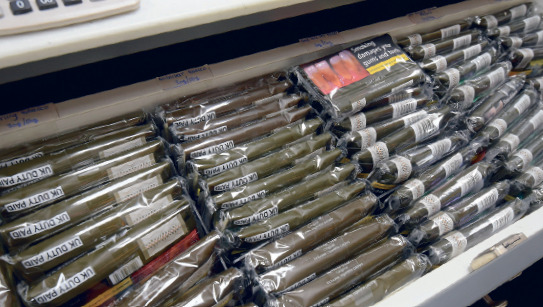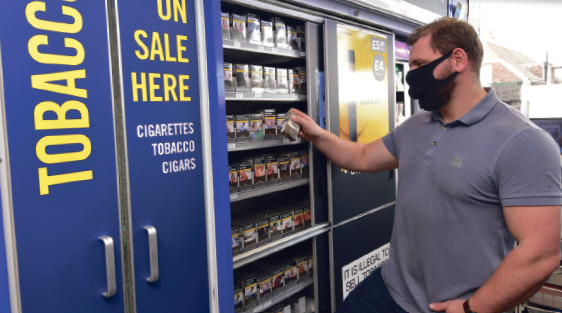According to research gathered by IBIS World, the market size for tobacco is projected to decrease over the next five years. Its research predicts that due to rising public awareness of the health implications of tobacco and the imposition of new legislation, tobacco revenue sales will decline at a compound annual rate of 3.4%. However, further studies indicate that retailers can expect segments within the tobacco category to show signs of growth in years to come.
Areas in growth
According to Imperial Tobacco, tobacco is worth £14bn each year before tax, with factory-made cigarettes (FMC) and roll-your-own tobacco (RYO) holding 54% and 46% of the overall market share. In fact, a report conducted by Statista on the revenue of the tobacco products market from 2024- 2027 shows that cigarettes, RYO, cigars, cigarillos and e-cigarettes sales are forecast to increase between 2023-2027.
Tom Gully, head of consumer marketing UK&I at Imperial Tobacco, says that RYO tobacco and the tobacco accessories category provide a substantial sales opportunity for retailers. “Filter tips are worth a sizeable £114m of sales while regular papers account for £44m, king-size papers £29m and combi papers £33m,” he says.
Read more Imperial Tobacco product news and articles
Meanwhile, Nataly Scarpetta, marketing manager at Scandinavian Tobacco Group UK, highlights the importance of cigars and cigarillos. “The total UK cigar category is worth £295m in annual sales, which is a value increase of 3.2% versus the same time last year,” she says.
“Cigarillo sales account for the largest of the four segments in the cigar category and is the only one currently in growth, responsible for nearly half of total cigar volume sales.”
Prioritise value
Value has become a top priority for tobacco consumers and retailers need to stock accordingly.
Andrew Cruden, from Market Square News in Northampton, says: “I have found that margins on tobacco have slowed down in recent years as customers look more for value products rather than expensive brands. I would say that 80% of tobacco customers that come in store are looking for the cheapest tobacco option rather than a specific brand.”

Gully says that shopper demands for value have gained momentum as a result of the cost-of-living crisis. “We are now seeing the lower priced products account for the largest proportion of tobacco sales,” he says. “Therefore, we’re seeing a shift towards value products across the entire category.”
How to be competitive with tobacco
Dipak Shah, owner of H&R News in Camberley, Surrey, says that promotions are key when it comes to tobacco sales. Shah runs promotions every month on his Imperial Tobacco brands and Embassy Signature Rolling Tobacco, and has reps from Imperial Tobacco come in store twice a week to discuss products with staff and customers.
“The offers enable customers to get £1 to £1.50 off their purchase,” he says. “Riverstone Easy Rolling Hand Rolling Tobacco is a popular purchase that customers can get for £16.50 with the promotion.”
Speaking to supplier representatives and running promotional activity in store can encourage repeat tobacco sales and boost store profile.
“There are not a lot of stores nearby that stock a tobacco offering as large as ours, so it is important that we offer reasonable prices and keep our staff and customers as educated as possible on new products within the category,” says Shah.
Legislation you need to prepare for
The government has recently announced future plans for a generational ban. The legislation, which is set to be enforced in 2027, will prevent individuals born in 2009 or younger from ever legally being sold tobacco products.
This means that the minimum smoking age in 2027 will increase to 19, rising to 20 in 2028, with one year added with each year that passes. The UK government, Scotland, Wales and Northern Ireland, will make it an offence for retailers to sell tobacco to anyone at or over the legal age.
According to a recent survey from JTI, 55% of retailers are concerned that the proposed changes will make ID checks more complicated for staff.
A further 67% of retailers said the ban will likely lead to an increase in illicit tobacco activity, while 62% believe that the ban will be costly to their businesses in the long-term.
Shah says that while tobacco sales would likely be unaffected, it could pave the way for smokers to source products from elsewhere in the future.
What will the disposables ban mean for tobacco
The government has also recently announced its intention to ban disposable vapes. The legislation is set to be brought in as soon as possible, allowing space for an implementation period of at least six months. Pramit Patel, from Epping Stores in Epping, Essex, says that while the disposable ban could encourage some users to switch to tobacco, he thinks that a complete shift to tobacco is unlikely. He and Shah think disposable vape users might make a switch to heated tobacco devices instead. Retailers concerned about the potential loss of income following the disposable ban should look at other next-gen options.
“We are going to try and switch our focus on to open-pod or refillable-pod vape systems in light of the disposable vape ban,” says Patel. “Tobacco tends to be purchased by older demographics, whereas we find younger consumers were gravitating to disposable vapes, so it is hard to say whether tobacco sales will be impacted.”
Read more tobacco product news and category advice






Comments
This article doesn't have any comments yet, be the first!